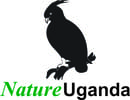Wetlands
Wetlands
- Home
- Wetlands
NatureUganda is actively involved in demarcating and restoring wetlands countrywide. NatureUganda’s approach to wetland conservation centers around advocating for their protection by identifying Ramsar Sites, enhancing the capacity of local communities residing in close proximity to the wetlands to engage in conservation practices, and undertaking efforts to restore degraded wetland systems. Some of NatureUganda’s efforts contributing to wetlands conservation include;
Out of 12 Ramsar Sites in Uganda, NatureUganda has been a major contributor of key information for the designation of 10 Ramsar sites. Looking to the future, we are advocating for the designation of new sites.
Two other sites namely Lake Bunyonyi and Kiyanja wetland have been approved by the national Ramsar committee but await government recommendation to the Ramsar Secretariat.
NatureUganda has financially and technically supported the development of wetland management plans for a number of wetlands. These include Semagimbi wetland, Lake Nabugabo wetland system, Nabajuzi wetland system, Mabamba wetland system and Lutembe wetland system.
NU has developed and implemented restoration plans for a number of wetlands including Kaku-Kiyanja, Rushango, Komuchwezi and associated wetlands in the Mid-Albertine Rift. Restoration activities undertaken included demarcation using concrete pillars, re-vegetation and provision of alternative livelihood to various wetland user groups.
NatureUganda continues to be an active player in informing and influencing the formulation of Environment and Natural Resources policies and strategies in the country. This is based on its wealth of knowledge and information from research and biodiversity assessments as well as advocacy work and implementation of downstream programme for conservation-cum-development. NU is garnering support in order to designate more wetlands as Ramsar sites.
Community Conservation Agreements
Community Conservation Agreements provide legally protected rights for communities to manage wetlands and also empower the communities to take responsibility and play an active role in wetland management now and in the future, making it hard for outside interests to develop unsustainable projects within the wetland areas.
Site Support Groups
Communities near natural resources are the major custodians for these resources. NatureUganda, has been implementing initiatives aimed at enhancing collaboration between the local communities living adjacent to Important Bird Areas “IBAs” that are critical for biodiversity conservation since 1995 (Byaruhanga et al. 2005). These communities are organised into groups referred to as Site Support Groups (SSGs). These SSGs were initially developed by adopting the Community-based institutions found existing at the IBAs and currently, NU works with 17 SSGs in Lutembe bay, Katwe-Kabatooro, Musambwa Islands, Mabamba bay and in lakes Opeta and Bisina.
Related Projects
Latest News & Articles
NatureUganda Undertakes Review and Update of the Murchison Falls–Albert Delta Ramsar Site Management Plan
NatureUganda hosts nature walk to promote conservation and tourism in Bugoma CFR
Site Profiling of Mabamba Bay and Musambwa Islands: Opportunities for Biodiversity Conservation and Climate Resilience
Empowering Women, Advancing Conservation: NatureUganda Staff Trained on Gender Mainstreaming
Hope for the Crown: Crane census sheds a glimmering hope for the Grey-crowned Crane population
Related Posts
Recent Posts
NatureUganda Undertakes Review and Update of the Murchison Falls–Albert Delta Ramsar Site Management Plan
NatureUganda hosts nature walk to promote conservation and tourism in Bugoma CFR
Site Profiling of Mabamba Bay and Musambwa Islands: Opportunities for Biodiversity Conservation and Climate Resilience
All Categories
- Conservation and Development (36)
- Eco-tourism (6)
- Education and Awareness (14)
- Forests (12)
- Gorvenance (1)
- Habitats (13)
- membership (2)
- Nature walk (3)
- People (10)
- Projects (13)
- Public dialogue (9)
- Research and Monitoring (22)
- Sites (6)
- Species (13)
- Wetlands (16)
- Wildlife (10)














